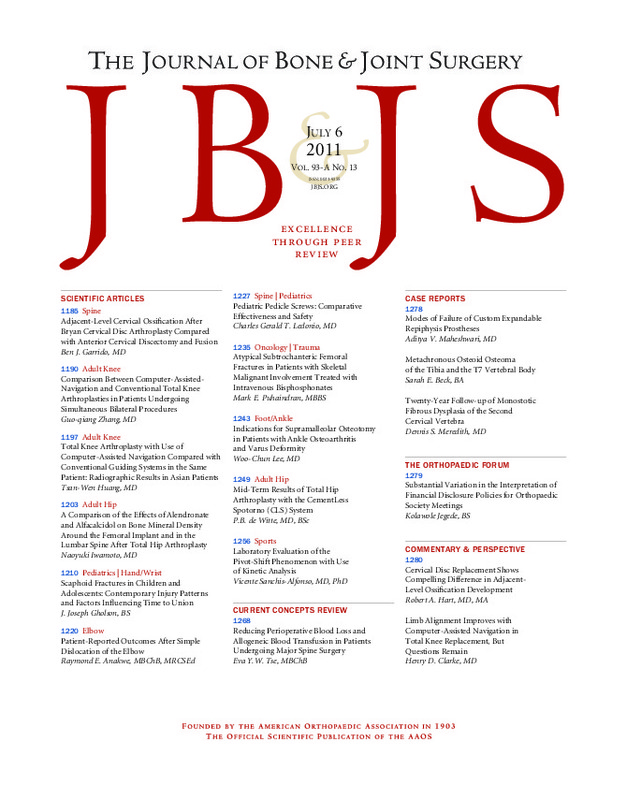JavaScript is disabled for your browser. Some features of this site may not work without it.
Buscar en RiuNet
Listar
Mi cuenta
Estadísticas
Ayuda RiuNet
Admin. UPV
Laboratory Evaluation of the Pivot-Shift Phenomenon with Use of Kinetic Analysis
Mostrar el registro completo del ítem
Sanchis Alfonso, V.; Baydal Bertomeu, JM.; Castelli ., A.; Montesinos Berry, E.; Marín Roca, S.; Garrido Jaen, JD. (2011). Laboratory Evaluation of the Pivot-Shift Phenomenon with Use of Kinetic Analysis. Journal of Bone and Joint Surgery, American Volume. 93(13):1256-1267. doi:10.2106/JBJS.J.00582
Por favor, use este identificador para citar o enlazar este ítem: http://hdl.handle.net/10251/43863
Ficheros en el ítem
Metadatos del ítem
| Título: | Laboratory Evaluation of the Pivot-Shift Phenomenon with Use of Kinetic Analysis | |
| Autor: | Sanchis Alfonso, Vicent Baydal Bertomeu, José Mª Castelli ., Andrea Montesinos Berry, Erik Marín Roca, Susana Garrido Jaen, Jose David | |
| Entidad UPV: |
|
|
| Fecha difusión: |
|
|
| Resumen: |
Background: Currently, a suitable and reliable noninvasive method to evaluate rotational stability in vivo in anterior cruciate ligament-deficient knees, particularly during sports movements, does not exist. We speculated ...[+]
|
|
| Palabras clave: |
|
|
| Derechos de uso: | Reserva de todos los derechos | |
| Fuente: |
|
|
| DOI: |
|
|
| Editorial: |
|
|
| Versión del editor: | http://dx.doi.org/10.2106/JBJS.J.00582 | |
| Tipo: |
|








